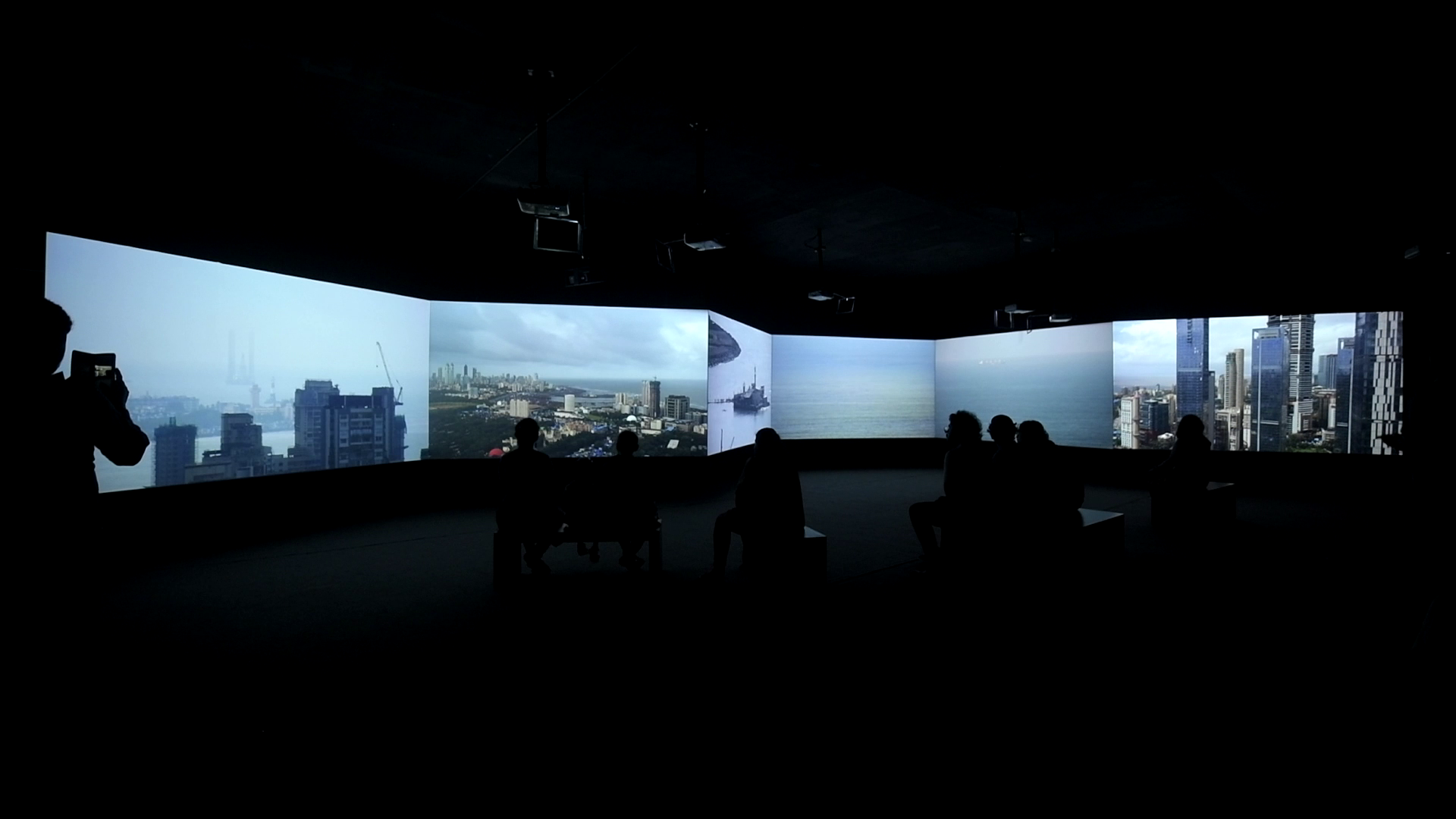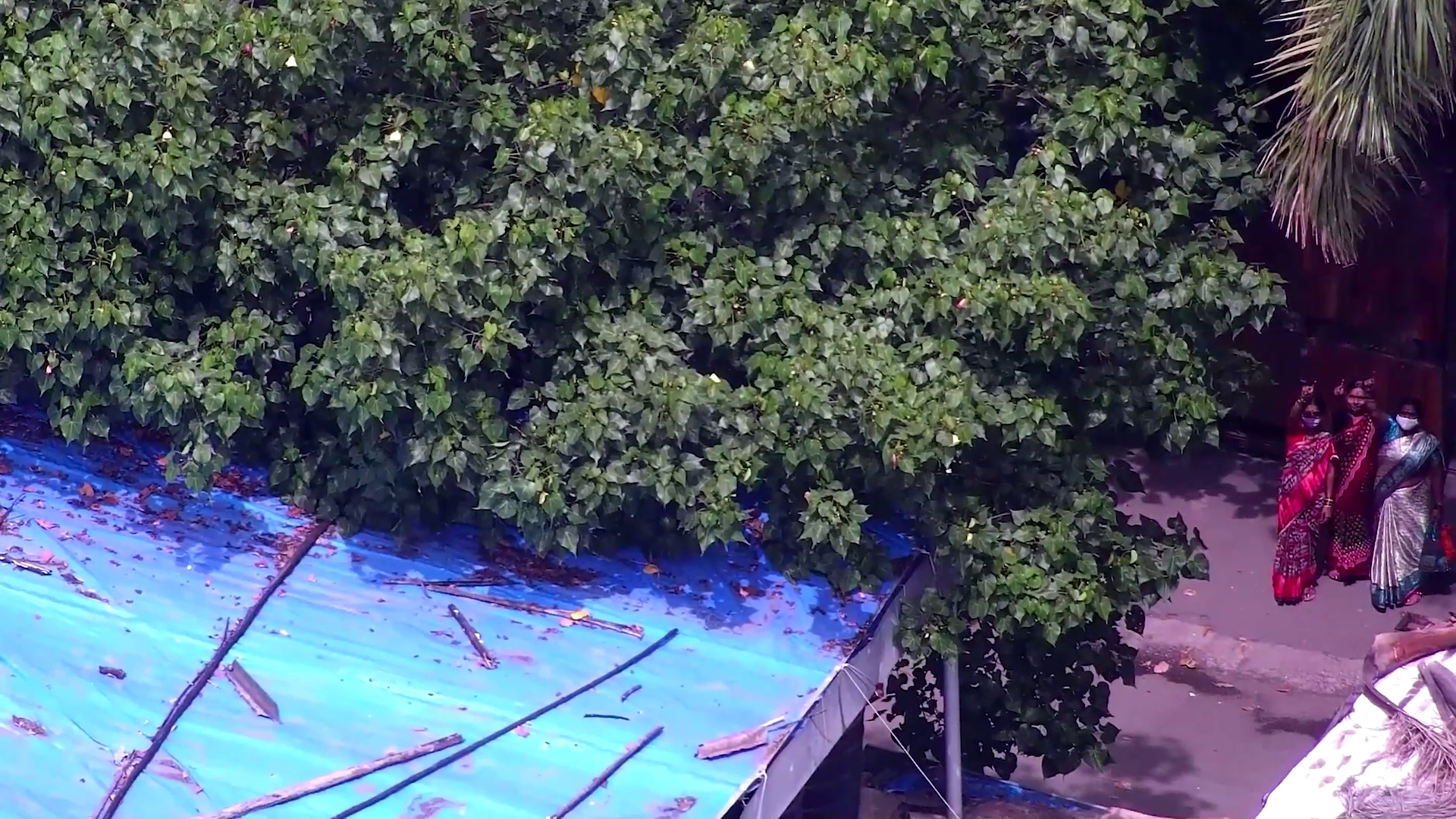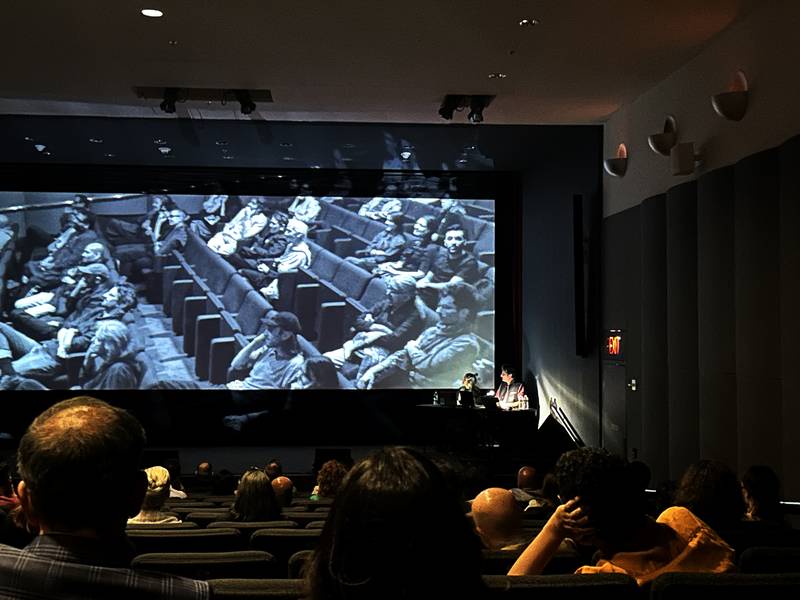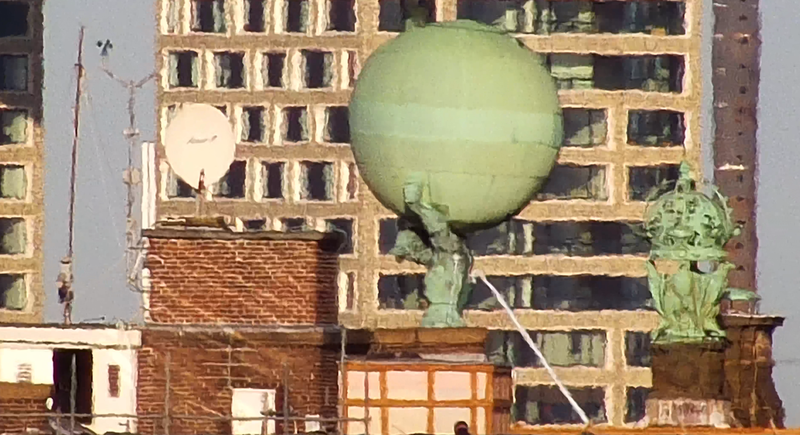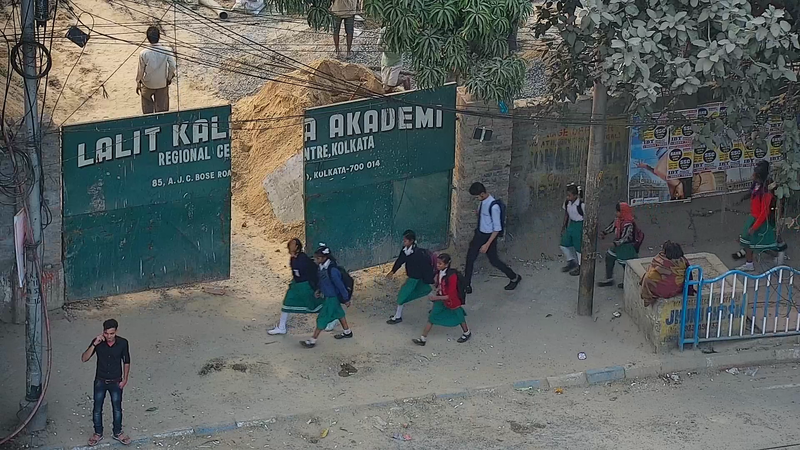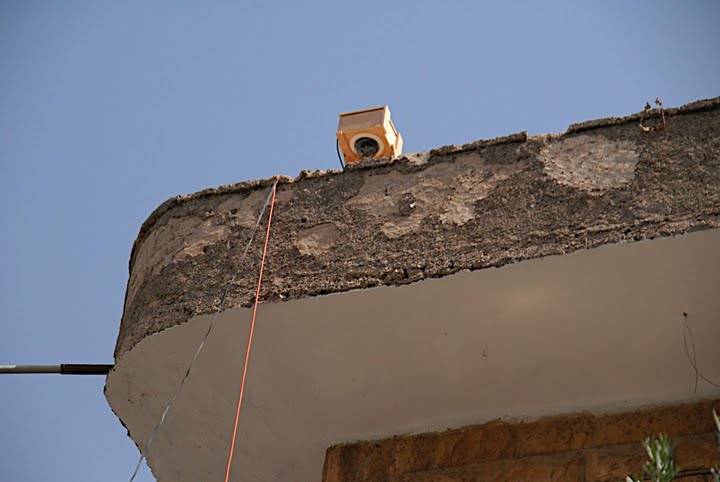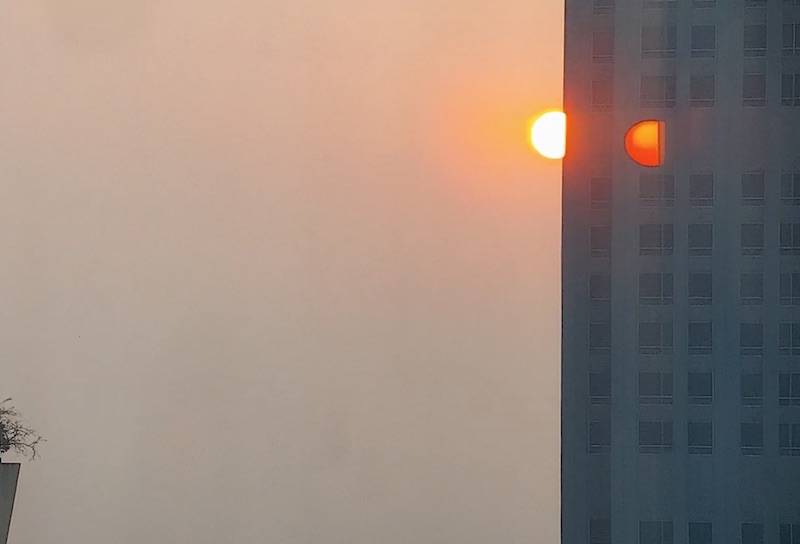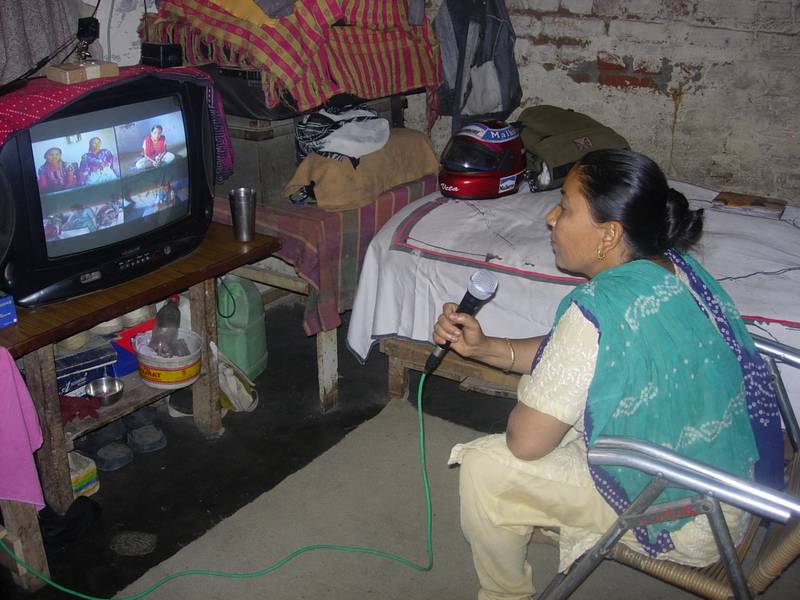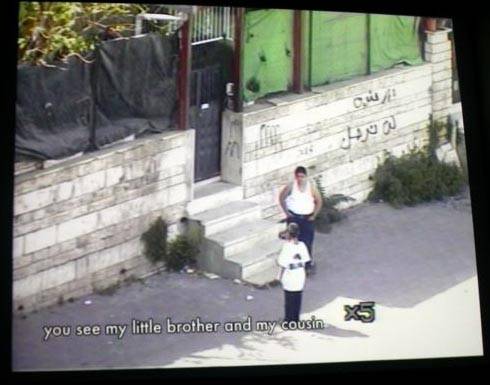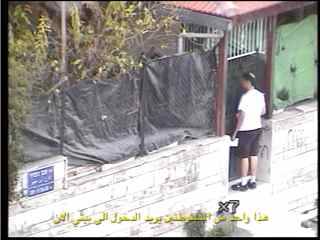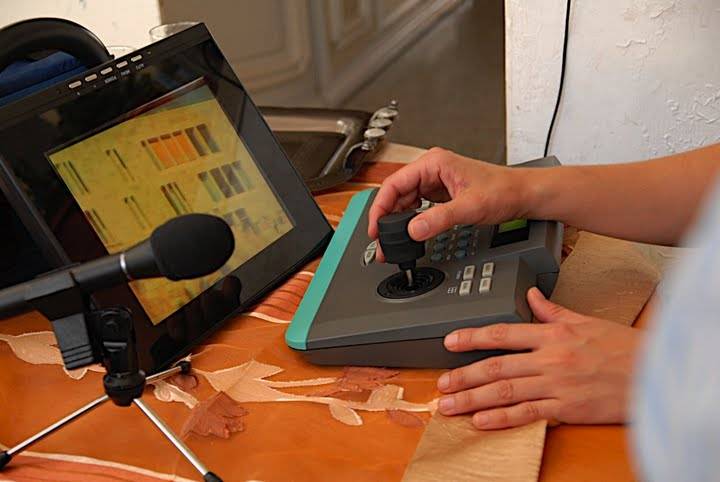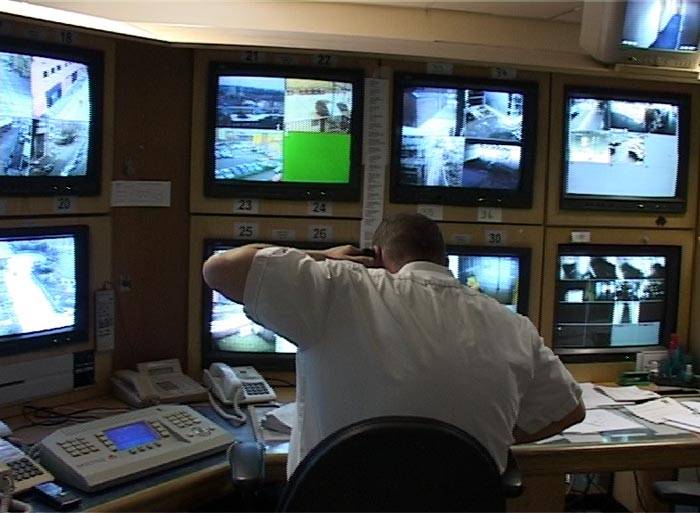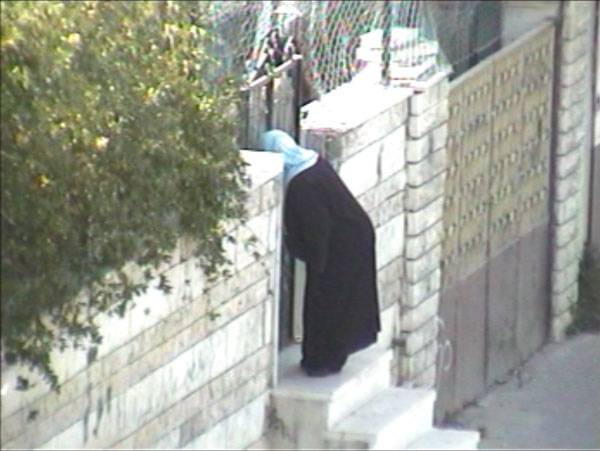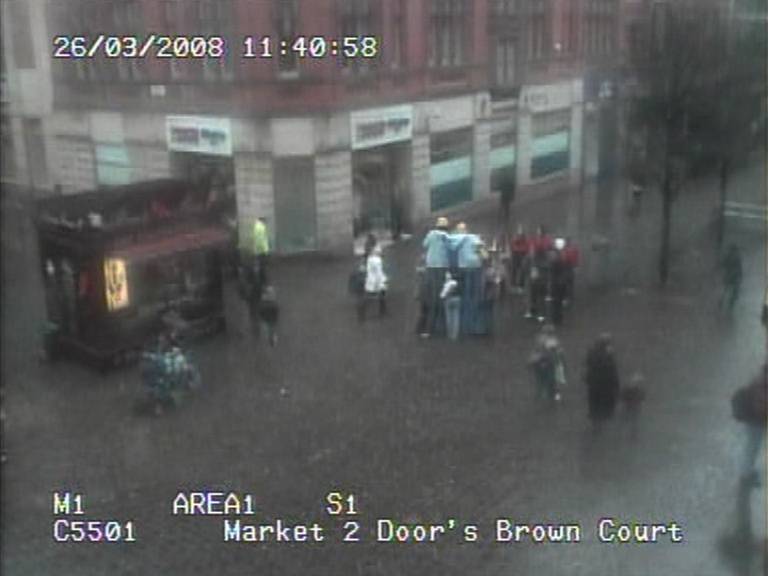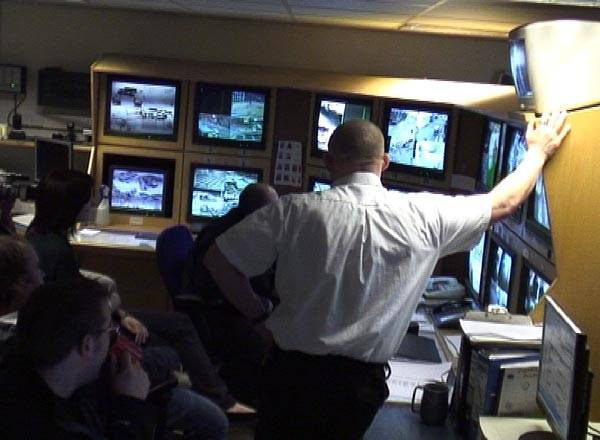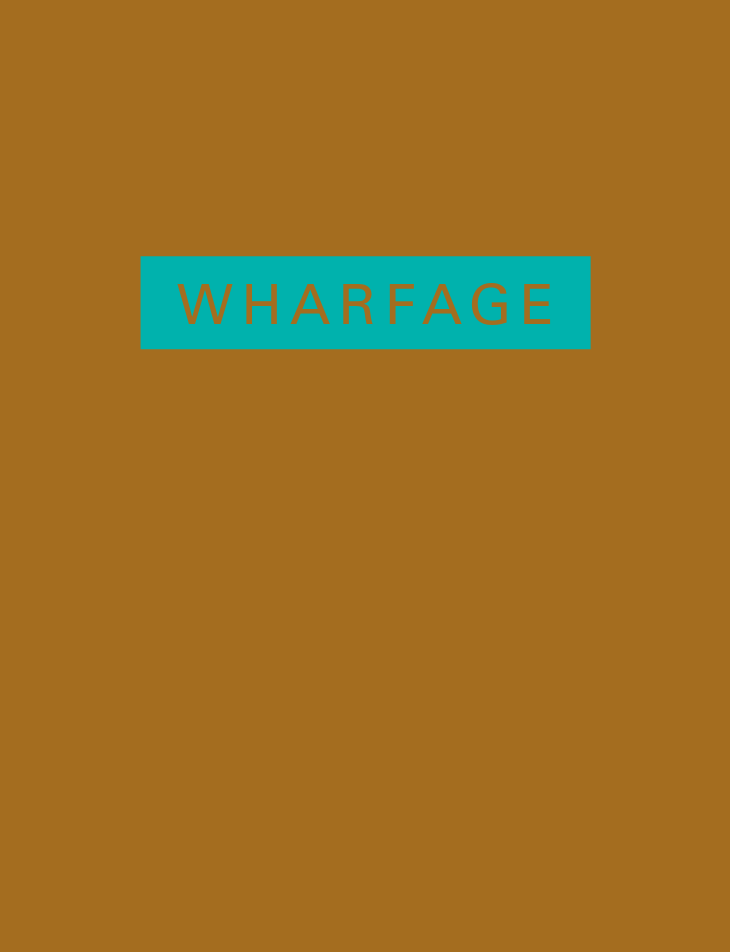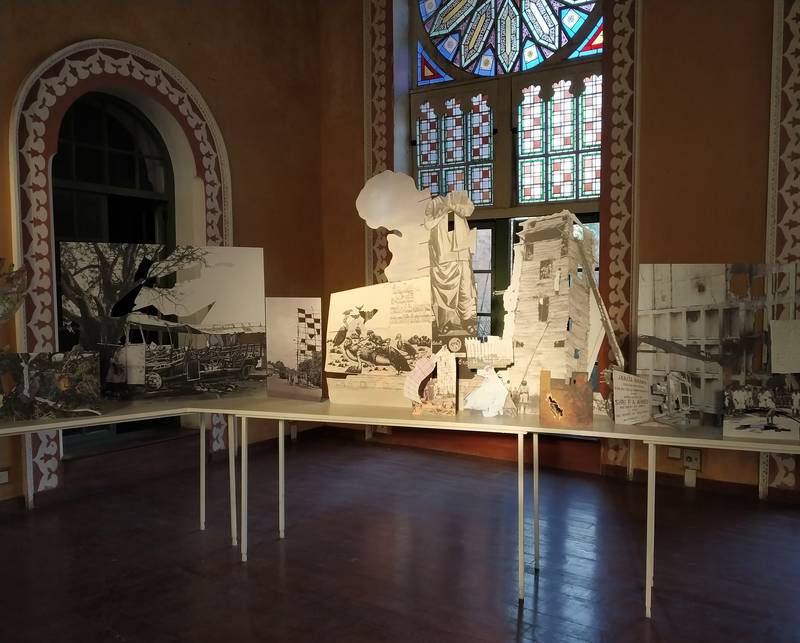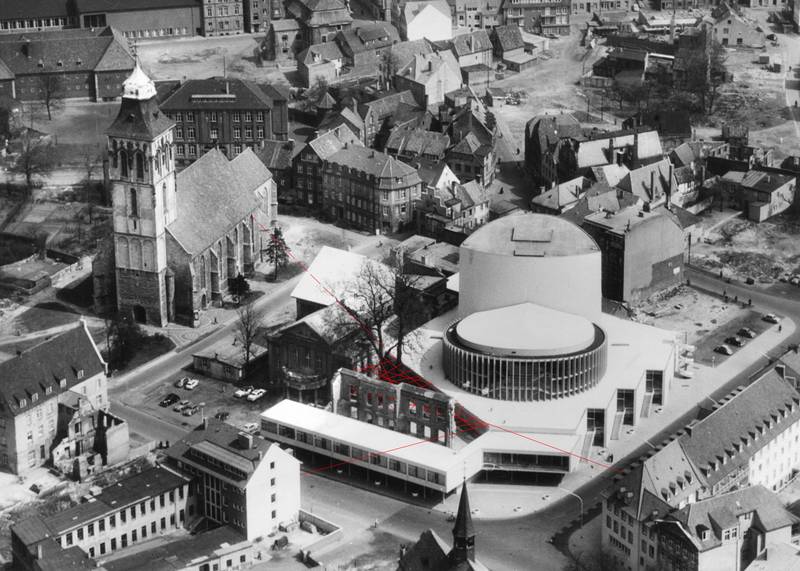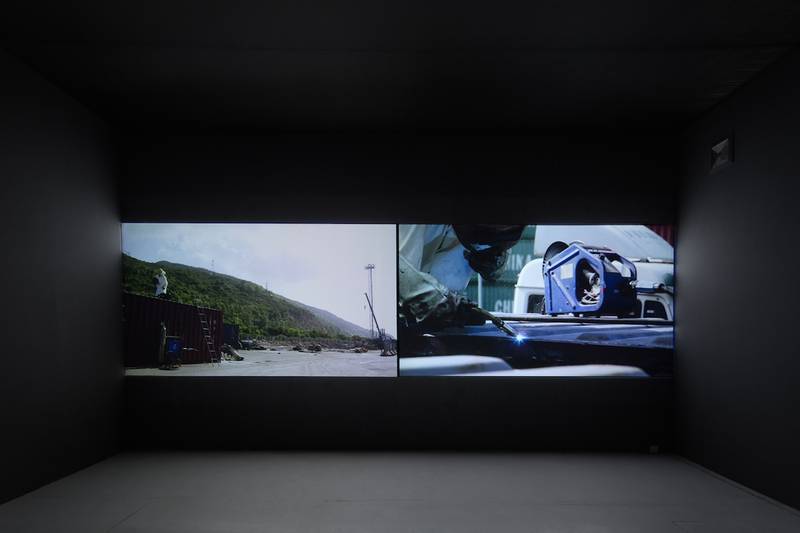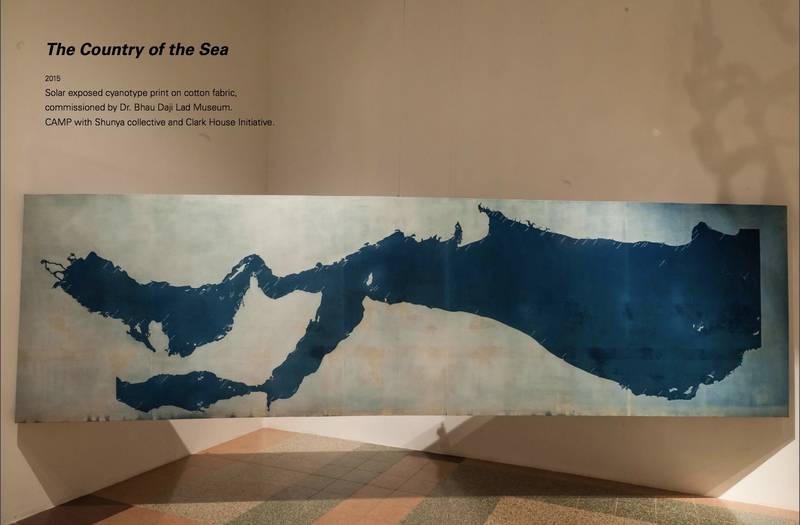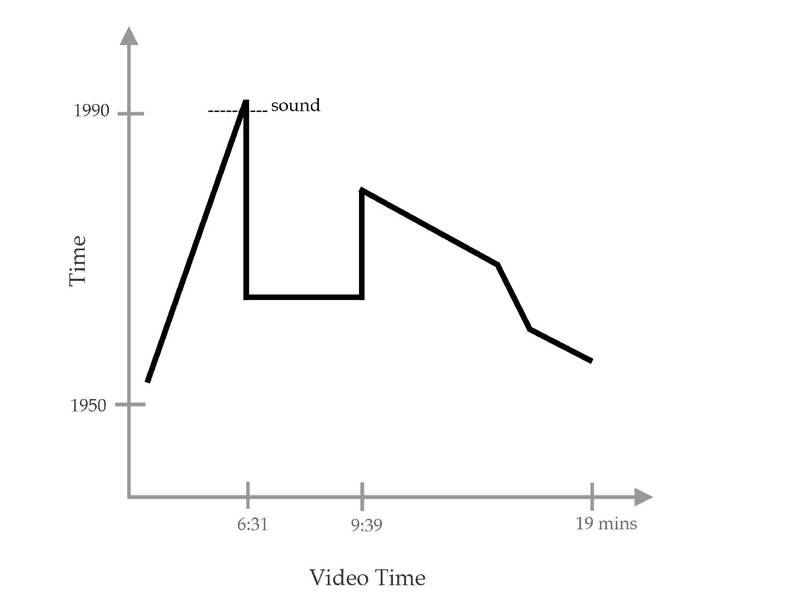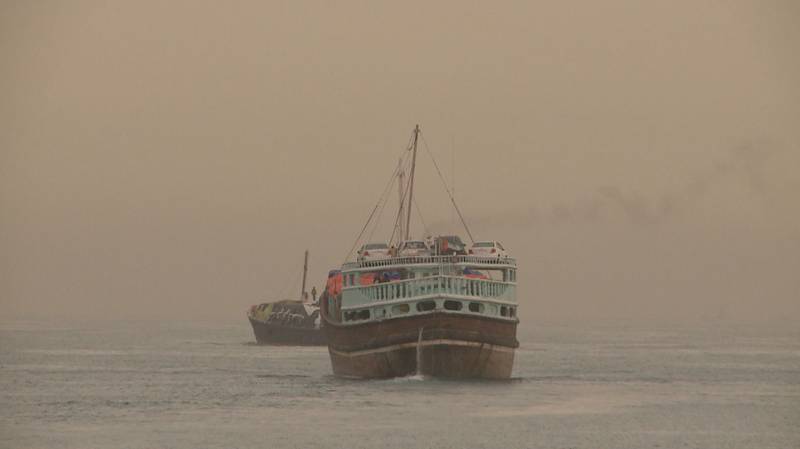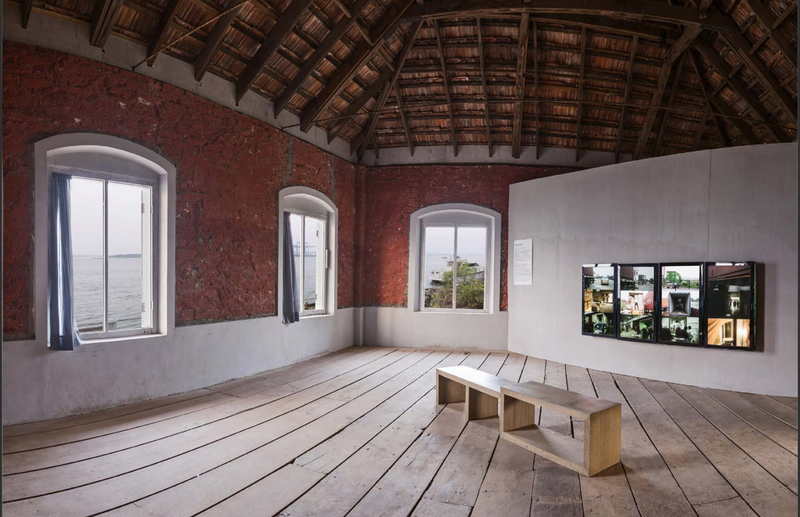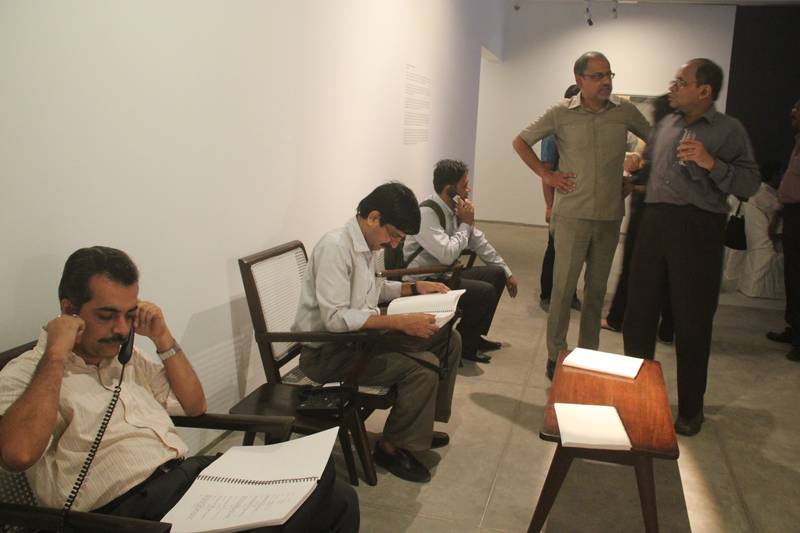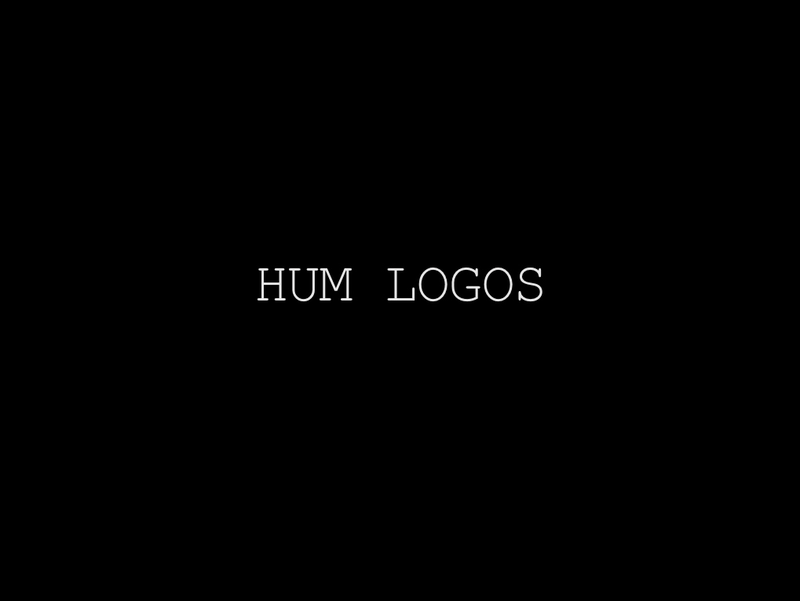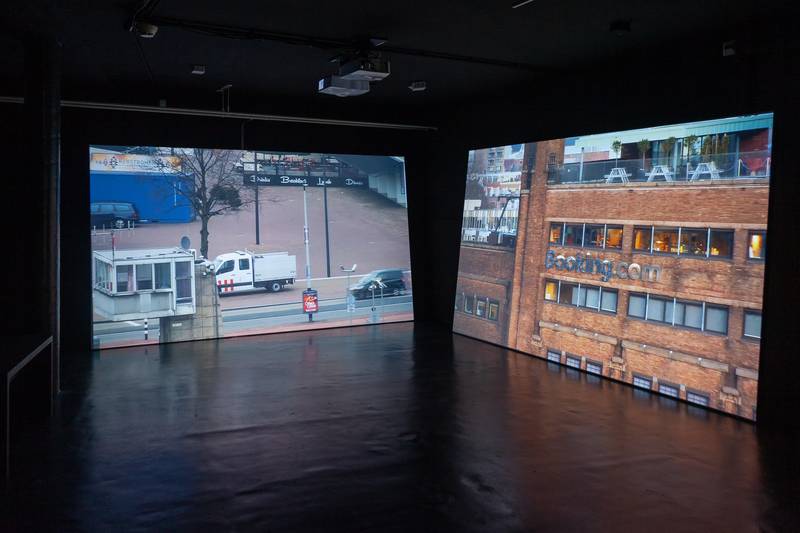
In Cameras Res, 2019
On three screens, a city-symphony filmed by automated CCTV cameras in Amsterdam. The optical and motor capacities of these cameras are pushed to an extreme. Certain human subjects reappear near or far in the images, suggesting a form of reciprocal knowledge or intent, a secret pact between cameras and people.
In Cameras Res is an exhibition in which CAMP suggests the optical equivalent of the literary concept (in Latin) In Medias Res, in which the narrative begins in the middle of a plot, or evolutionary sequence.
The point at which it enters is the camera itself.
An In-Camera edit is one done without a separate editing process, such as by a person using a film camera.
An In-Camera proceeding in the legal sense, is one from which spectators and jurors are excluded, thus the opposite of a public trial.
For this three-channel moving image installation, the resulting project of a De Appel
commission from CAMP, CCTV cameras were programmed to film landscape sequences in Amsterdam. In Cameras Res (2019) engages contemporary image-making from “inside the box”, re-working the “patrol” function of the camera, pushing its optical and motor capabilities to the edge.
This continues CAMP’s long-time critical engagement with the simultaneous advances in visual surveillance technology and cinema.
In Cameras Res takes its points-of-view from Amsterdam’s historical buildings, the former Royal Dutch Shell Headquarters (now A’DAM Tower), the former NHM building (Netherlands Trading Society, now Stadsarchief Amsterdam) and the former Tetterode printing foundry (now artist ateliers), connecting them to the surrounding landscape via camera-controlled shots.
Each film in the exhibition was captured from a single camera position, and each uses a distinct editing technique. We see several micro and macro versions of the city, in different weather and light conditions. The recurrence of certain human subjects in the frame, near or far, suggests a form of reciprocal knowledge or intent, a choreography or interplay of patterns. Here, CAMP speculates about future images and future awareness, via the question: What can cinema be in this time where there are more cameras than people?
In Cameras Res
3-channel HD CCTV video
20:40
Camera Software: Jan Gerber
De Appel production team: Lucie von Eugen, Charlie Rosa Jansen, Liza Nijhuis
Actors: Sjoerd Bartlema, Lu Klassen
Thanks to Rachael Rakes, Niels Van Tomme, Maaike Lauwaert, Tom Makkes, Abhishek Pradhan, Finbar van Wijk & Sjoerd Tim (Sjaft), Yashaswini Raghunandan.
Phone video from the opening at De Appel.
Interview with CAMP - Rachael Rakes
This project is the most recent piece in your long-sustained engagement with the mechanics of capture. Can you discuss some of the origins of this line of work?
CAMP: At first, it comes from a deep criticism and review of the documentary relation between ethnography and cinema. CAMP’s practice posits this as a set of triangular relationships between subjects, authors and technologies. Their dynamics create different regimes of images, sometimes in very subtle ways. The camera and compositing technologies are an important but less-observed factor.
For example the first cameras we bought more than a decade ago were static CCTV cameras at €10 a piece, that along with a video multiplexer and hundreds of meters of coax and XLR cables, cost less than a small mini-dv camera. These CCTV systems were then coupled with household TV screens and microphones to create day-long neighbourhood conversation zones across an urban village in New Delhi, in a project called Khirkeeyaan. The gaze of lens-based authorial filmmaking was fractured here, along the cross-hair grid of a CCTV multiplexer. Subjects looked out at us and at each
other, and could enter and leave.
In an even earlier work by Ashok (Windscreen), the mechanics of video capture was clear in a sculpture made from paper pixels held up by wind, interrupted in jagged pixelated forms by the subjects body.
The triangular ecosystem of image and narrative generation extends into systems of storage and distribution. In the early years we worked with FM, parasite cable and TV infrastructures, local broadcasting and narrow casting as well as the early internet. There was a desire to be intimate with large ecologies of communication and capture, but also to make our own, with our own set of rules. For us, that’s what new cinema is about: the navigation of these landscapes and new forms of address it produces.
Perhaps we could also talk about how these mechanics have changed over time, along with changes in technology and cinematic aesthetics?
CAMP: We can move from the CCTV/cable TV mash-up described above, which is really about an alternative imagery for television, to what happens with other visual institutions and practices. We are not fans of “poor image” theories because images have travelled in many directions not defined by resolution or originality. In our film From Gulf to Gulf to Gulf there is a sort of equivalence between low and hi-res images, and there are over 25 camera people in the credits. So the typical ethnographic subject has moved location and is now pointing cameras at the world, replete with music from their onboard playlists.
We did projects by attaching cheap point-and-shoot still/video cameras to telescopes, by entering CCTV control rooms, or with leaked security footage. There is an interest in how these technologies and the people working with them can be encouraged to hybridise and think about images in ways not “captured” by their current deployment. After all, the whole of CCTV is a kind of monumental ecosystem of image waste, waiting for an event. We are interested in where in the network we can add a machine, a person, an idea, a new practice to trouble this settled function of images. We also run an online footage archive, Pad.ma, which is about paying a lot of attention to that waste, to what gets cut out at a particular time and place. Several of our recent projects use a single PTZ camera, a bit like in the Camera Obscura tradition, to disturb its workings from the very basic premises.
You have made projects using CCTV or surveillance tech in several cities—where some elements of the cityscape are necessary instigators in the works—I’m curious how this has informed your sense of these places?
CAMP: Yes, this is very interesting and specific. For example, in 2008 we made a film using the 206 cameras inside the then-largest mall in Europe (CCTV Social: Capital Circus) , which was rebuilt to cover the historic city-centre after the old mall in Manchester was bombed by IRA. “Saved by the bomb”, said the tabloids as city planners spruced up so-called “Gunchester” by kickstarting a regeneration campaign with massive CCTV infrastructure. The match-cut continuity of this lm was inspired from another project where we, and subsequently members of the public, had entered CCTV control rooms in Manchester (CCTV Social: Coldclinic) and seen camera operators in action. In both these cases, hundred-plus participants in front of the cameras signed special image release forms (so that we could access the footage under provisions of the UK data protection act) that were about a claim to their own appearance as CCTV subjects, as much as a classic image release.
In Palestine, in and around East Jerusalem, 8 families filmed from the privacy of their homes, watching the feed from rooftop Pan-Tilt-Zoom cameras, on their TV sets (The Neighbour before the House). A film production made possible without acknowledging or seeking permission from the Israeli state, and re-orienting the subject position of an eternally interned citizen. Instead of bearing witness in the usual way, these families controlled cameras which were set at a vantage point on their own homes, and narrated stories of their life and the landscape of their city. The result is very close to what Masao Adachi and his comrades referred to as ‘landscape theory’, where the image allows you to understand power and control, or a somewhat intimate portrait of what Eyal Weizman called the ‘3 dimensionality of occupation’. The full footage of this project is in the public domain, and is still referenced by many studying Jerusalem city.
There were CCTV projects in Rostock at the G8 summit (Kneipness or Wellness at the camp), in Ljubliana piggy-backing on public CCTV via internet, in Bombay by mounting hi-res PTZ cameras on cinema halls and using the image live on IMAX screens, in our studio as a neighbourhood virtual tour, and as a general possibility in all lm work we do. One of the lessons from all this has been that CCTV, embedded in urban environments today, has become accepted without being fully digested. Its scope, duration and distribution remain somewhat in-assimilable into our existing human senses and existing cinematic genres. It has to do with an aesthetic of continuous scanning, extreme changes in scale (zoom-ability) and integration into urbanity in instrumental but invisible ways. CCTV itself is an infrastructure, i.e. it is also a system on which other things are built, a future that Michael Klier’s film The Giant, who angularly looked down onto German cities of the time, seemed to suggest already in 1984. The ‘Giants’ of today track cars and recognise people. How can we reconnect the vastness and inhumanity of CCTVs technological side to a perceptual system called cinema? This question is also related to others. In Amsterdam, a city with a rich tradition of new media theory and art, a poster at the Waag put it bluntly: ‘Smart city - Dumb citizens’. Of course this is a provocation, but it is also the type of local challenge In Cameras Res enters into.
I would like to ask about your work here with actors—individuals you have planted in certain scenes that add a new kind of narrative woven within the surveillance footage. Can you discuss their place in the work?
CAMP: Yes, we have used them before as well, such as with the above Manchester examples. The point in both instances is to introduce some doubt as to who is an actor and who isn’t. This creates a tension around awareness that is something like an uncanny reverse of fiction cinema. People are going around their daily lives, but there is some explicit or implicit understanding in everyone of being watched. Sometimes this spills over into ‘acting’, sometimes it doesn’t. Here they are arriving into the work as surprises, as special agents who have a connection to the inner project of the camera.
How has your work around the aesthetics and politics of visual security affected the other work you do—other films, organising, installations, or research?
CAMP: Let us answer in this way. No one at CAMP is on any social media platforms. This is not the internet we are interested in. With projects like Pad.ma and Indiancine. ma it has been about a different kind of attention to materials, and a series of friendships around building things and exchanging knowledge. In our art practice we are happy to parse through large amounts of data in DIY automated processes, or deploy digital flotsam of all kinds as parts of our films. These things come from living and breathing digital materials. At the same time, we’ve built book scanners and libraries, and in general believe that “access” is also about new sensual encounters that happen through and around the internet. This is different than with social media internet, where surveillance and dataveillance are the combined background rules to its community—aspects that are only now coming into a wider understanding.














